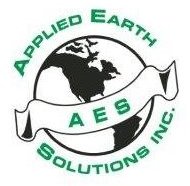Air Monitoring
Environmental Health & Safety Air Monitoring is required for all employers whose employees could potentially be exposed to hazardous material or other airborne contaminants over the OSHA permissible exposure limit (PEL). AES can develop a site specific Environmental Health & Safety Plan for your next project. Our staff will perform OSHA onsite sampling & monitoring of water, soil, and air in an around the work environment to determine the level of employee air contaminant exposure. AES will advise the client and workers about the PPE, exposure reduction controls, and decontamination procedures. AES will maintain, calibrate, and operate all sampling & monitoring equipment. AES will maintain records of calibration, site conditions, air monitoring results and ensure results comply with limits set forth in your Health & Safety Plan. Our Health & Safety plans, sampling & monitoring programs all utilize OSHA, EPA, & NJDEP standards and test procedures are all managed by our staff of trained professionals.
Equipment utilized by AES for air monitoring project include:
- dust & microscopic particle measuring devices
- 4-Gas Monitor (LEL, Oxygen, Hydrogen Sulfide, Carbon Monoxide) for Confined Spaces & Hazardous atmosphere entry evaluations
- -Photo Ionization Detectors for volatile & semi-volatile compound detection
- -Flame Ionization Detection for Methane, Volatile & semi-volatile compound detection
Low-Flow Sampling
Low-Flow sampling is a groundwater sampling technique approved by EPA & NJDEP utilized by AES to collect representative samples of groundwater from the formation adjacent to the monitoring well screen. Low flow sampling must be performed by a NJDEP State Certified Laboratory. (AES’s NJDEP Laboratory ID# 12044).
The low flow sampling technique, when properly orchestrated, does not cause excessive water level drawdown and movement of water from the geologic formation into the well. The reduced stress on the water table minimizes turbidity and ultimately allows for collection of consistently lower concentrations of sediment driven parameters with heavy metals such as Lead & Arsenic, along with semi-volatile compounds such as Benzo(a)pyrene & Benzo (d e f) Chrysene. Additional advantages with low flow sampling include minimized aeration of groundwater during sample collection and reduced volume of purge water to treat and dispose.
Submersible pumps, bladder pumps, and peristaltic pumps are all options for low flow sample collection. The pump or pump intake tubing is set to a designated interval and pumping begins. Ideally, the flow rate in typical low flow sampling application varies from 100ml/minute up to 250ml/minute. Water level, chemical & physical water quality parameters including: temperature, pH, specific conductivity, dissolved oxygen, turbidity, & ORP are all continuously monitored with a water level meter (heron), calibrated water quality multi-parameter instrument (Horiba U-51), & Turbidimeter (Lamotte 2020) every 5 minutes of purging with use of a flow cell. Sample collection takes place when stability of the water level and monitored water quality parameters is achieved over a 15 minutes period.
Benefits to Low Flow Sampling:
- Improved sample quality, accuracy, precision and reduced variability with data generated using this technique.
- Reduced amount of purge water for treatment and disposal results in client savings
- Improved detection & quantification of contaminants and their distribution within a geological and or hydrological formation
- Reduced application for sampling may reduce monitoring costs for clients
Vapor Intrusion
Vapor Intrusion (VI) is defined as the migration of volatile chemicals from the subsurface into overlying buildings through subsurface soils or preferential pathways. The presence of volatile organic compounds (VOC) in soil, or especially ground water, offers the potential for chemical vapors to migrate through subsurface soils and along preferential pathways, potentially impacting the indoor air (IA) quality of affected buildings. AES offers professional, licensed VI investigation services and maintains resources for VI mitigation.
VI investigations are carried out in a strategic manner. Initial stages of a VI investigation are to identify & define the existence and potential of vapor intrusion pathways and receptors, including building surveys, groundwater quality data, and site condition characteristics. Vertical screening, soil gas sampling and analysis, are typical steps that follow and provide the parameters to develop conceptual site model for VI investigation and mitigation.
Soil gas sampling and indoor air samplings are commonly used tools in VI investigations. Soil gas sampling involves refined, principled collection of vapor typically from beneath the concrete slab of a dwelling’s basement floor. Soil gas sample collection is minimally invasive as only a small diameter hole is drilled through the concrete slab which is unrecognizable once filled back with cement after sample collection. Some cases may warrant further sampling to determine the extent of vapor intrusion in a dwelling or locale. 24 hour indoor air sample collection is conducted in these extended investigation circumstances. Qualitative & quantitative air quality analysis is conducted by a New Jersey State Certified Laboratory. After careful data review, AES will formulate a compliance management plan to address Vapor Intrusion responsibility for every client’s project.

